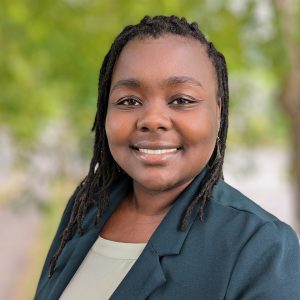Franco Albi | Brad Heilman, P.E. | Dan Williams | Scott Gibson, Alex Chorey, Jessica Spahr | Rob Siefken | Sofia WeirPierin | June Lukuyu | Gage Marek | Amy Grice | Ahlmahz Negash | Cuong Nguyen | Darin Johnson | Reid Shibata | Ryan Roy | Siobhan Doherty | Diane Baldwin

Franco Albi
Director, Regional Integration, Portland General Electric
Abstract:
This talk focuses on Portland General Electric’s Virtual Power Plant.The presentation will cover the portfolio approach Portland General is using to orchestrate Distributed Energy Resources and Flexible Loads through its technology platform to provide grid services and exceptional customer experiences.
Bio:
Franco Albi is the Director Regional Integration at Portland General Electric. His team is responsible for accelerating PGE’s participation in power markets and enhancing operational capabilities to increase the use of clean energy.
Mr. Albi has been working in the industry for over 20 years in roles including transmission & distribution, generation, and strategy to supporting the delivery of clean energy safely, reliably, and affordably.
Prior responsibilities include leading various organizations and projects in power supply and power delivery including development, construction, and commissioning of Renewable Energy projects and energy system infrastructure improvements.
Mr. Albi previously worked with PacifiCorp and the Bonneville Power Administration.His educational background includes an MBA and Master’s in Civil Engineering and he is a registered Professional Engineer in Oregon and California.
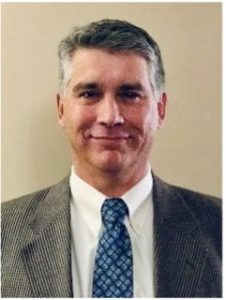
Brad Heilman, P.E.
Schweitzer Engineering Laboratories (SEL)
Title:
Overcoming Grid Challenges with Modern Solutions
Abstract:
The energy sector is facing a number of challenges that threaten the reliability and resilience of the grid. Cybersecurity threats, extreme natural events such as wildfires, concerns about resource adequacy, and the changing mix of resources and loads on the bulk electric system are all issues that must be addressed to ensure a secure and sustainable energy future. This presentation will briefly explore these challenges and solutions, including the development of smarter grid technologies. By taking a comprehensive approach to these issues, we can build a more resilient and reliable energy system that meets the needs of consumers.
Bio:
Brad Heilman, P.E., has a B.S.E.E. degree from the South Dakota School of Mines and Technology. From 1990 to 1997, he was employed as a system protection engineer for Black Hills Power & Light. His utility work included transmission line and generator protection, power plant and substation commissioning, and SCADA system upgrades. In 1997, he joined Schweitzer Engineering Laboratories, Inc. as a field application engineer supporting customers in Arizona, California, Montana, Wyoming, Utah, North Dakota, Nebraska, Nevada, Idaho, and South Dakota. He is an IEEE member and licensed professional engineer in the state of South Dakota.

Dan Williams
Principal Advisor – Western Markets
Title:
Understanding the organized markets in the West
Abstract:
This talk focuses on the organized day-ahead markets forming in the West. The presentation will cover differences between SPP Markets + and CAISO EDAM, implications of these markets emerging, and what it all means for utilities in the Northwest.
Bio:
Dan has worked in and around western wholesale energy markets for nearly two decades. Starting in the energy industry as a renewable energy contracts and settlements analyst for PPM Energy, Dan moved on to work as a real-time energy trader, first for Puget Sound Energy (PSE) and then Tri-State Generation and Transmission, before returning to PSE to help grow its FERC-compliance and markets and regulatory policy group. In 2012, Dan joined Portland General Electric’s power trading team where he helped organize and lead the Northwest Power Pool MC initiative, a regional effort to form a day-ahead and real-time market that pre-dated the CAISO Western EIM, before transitioning to representing PGE’s interests in the west as a Western EIM entity and participant in the CAISO intertie market. Dan joined Customized Energy Solutions in 2018 as Director of Market IQ-West where he advised and reported on CAISO policy and markets activity for a diverse range of industry clients. Dan transitioned to TEA in early 2023 where he now serves as TEA’s Principal Advisor on Western Markets and is actively engaged in policy development efforts across the west.

Scott Gibson
Manager – Energy Storage and Emerging Technology
Alex Chorey
Principal Engineer – Energy Storage and Emerging Technology
Jessica Spahr
Program Manager – Energy Storage and Emerging Technology
Title:
25MW Battery Storage Project at Snohomish County PUD
Abstract:
One electric utility in the US Pacific Northwest, in a look toward the long-term needs of the region, has developed a state-of-the-art microgrid combining community solar photovoltaic generation, advanced grid-forming battery energy storage system (BESS), and vehicle-to-grid (V2G) technology. This microgrid demonstrates the promise of an increasingly electrified future—from grid resiliency to V2G integration to an ability to run on 100% renewable power. Commissioned in mid-2021, the project represents a critical milestone in Snohomish Public Utility District’s (SnoPUD) journey to maximize the value of microgrid and grid edge technologies across their service territory.
One primary challenge that the microgrid addresses is the challenge of V2G integration and interoperability. Microgrid approaches can reduce the complexity and streamline the two-way service between the vehicle and grid. They also offer reinforcing benefits, where the vehicles can act as DER for the microgrid and beyond, and the microgrid can serve as a resilient hub for ensuring power for the electric vehicles. The paper will provide insight into strategies used, as well as showcase the benefits to the vehicle fleet, the microgrid, and the utility network. Lessons learned from the implementation will be distilled and highlighted. In addition to showcasing valuable insights from the project, the paper will present the architecture and demonstrate measurable impacts with real-world data.
In addition to the hardened V2G infrastructure, the microgrid will host two facilities that are critical to the operations of SnoPUD: a modular data center and a new utility office. Both facilities will benefit from failsafe and secure power provide by the microgrid, which will enable SnoPUD to meet critical objectives related to disaster response. This capability will allow the site to act as an emergency operations center and critical response hub during disaster events, providing utility resiliency against earthquakes that are common in the area, as well as risk reduction against increasingly severe weather events that are expected due to climate change.
Interoperability of components was a key factor in the microgrid design. A central strategy to address this has been compliance with the Modular Energy Storage Architecture (MESA) open standard to streamline physical, electrical, and communication interconnection of energy storage systems. MESA seeks to accelerate the interoperability of distributed energy resources, with a focus on utility-scale energy storage. The MESA-compliant BESS in the Arlington Microgrid complies with IEEE 1547 and California Rule 21 as well as additional market-based functions to ensure safe, reliable, and efficient operations for the utilities grid.
Microgrid projects like Arlington are helping to demonstrate the symbiotic benefits of pairing electric vehicles and locally generated solar. A microgrid also addresses the inter-related dependencies between transportation, integrated vehicle charging solutions, and the increasingly renewable backbone of the electric grid. For example, it allows clean solar energy stored in electric vehicles to provide ancillary and energy services necessary to integrate high penetrations of solar. A successful microgrid, much like energy storage investments, bundles together a range of values at the grid edge. This paper will illustrate how the value of each asset stacks into a successful business case for the utility, by providing critical backup power from hybrid operation of solar, BESS, and V2G; using the BESS to stabilize the network and manage peak demands; and providing a platform for renewables and electric vehicles.
Bio:
Scott Gibson is the Manager for the Energy Storage & Emerging Technologies Department at Snohomish County PUD. He is a Professional Electrical Engineer and a 1987 graduate from the University of Wyoming. After graduation, Scott worked for Boeing and then with a consulting company designing electrical systems for commercial and industrial facilities. In 2000, Scott joined the PUD where he had the opportunity to work on the development of a tidal generation project, assist with the construction of two “run of the river” hydroelectric projects and then be the project manager for the PUD’s first state-of-the-art utility scale microgrid.
Alex Chorey is a Professional Electrical Engineer and has worked for Snohomish County PUD for over 15 years. After graduating from Gonzaga University in 2007, he joined the PUD’s distribution and transmission engineering group to build and maintain the electrical grid in Snohomish County. After spending much of his career focused on building the infrastructure to deliver power to customers, he transitioned to his current role in the Energy Storage and Emerging Technologies group which is working to ensure that the PUD has reliable capacity resources to flow through that infrastructure. Alex is a Washington native and is excited to be a part of the development of clean energy resources in the Pacific Northwest.
Jessica Spahr is a project manager in the Energy Storage and Emerging Technologies group at Snohomish PUD. She graduated from the University of Washington with a BS in Atmospheric Sciences and University of Denver with an MS in Environmental Policy and Management. She has held a variety of environmental, renewable energy, and grant reporting roles at the PUD since 2007, including the environmental lead for the Admiralty Inlet Pilot Tidal Project, Arlington Microgrid, and PUD’s hydroelectric projects. She is passionate about supporting clean energy in Washington state and beyond.
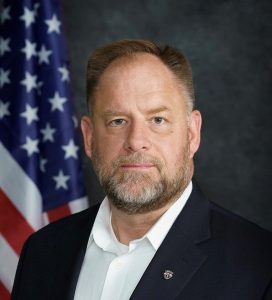
Rob Siefken
COO, Safegaurds3 and member of the E-ISAC’s Physical Security Risk Advisory Group
Title:
The VISA Risk Management Tool and Methodology for Physical Security
Abstract:
This talk focuses on NERC and E-ISAC’s recommended risk management tool for determining physical security upgrades. The well documented output from this discussion-based analysis gives the risk manager the ability to make an informed, risk-based decision on security upgrades and justification on where they must accept risk. The presentation will cover what the VISA process is, and what we have learned through delivering this workshop over 20 times throughout the North American grid.
Bio:
Rob Siefken currently holds the distinguished position of Chief Operating Officer (COO) at Safeguards3, where he plays a pivotal role in overseeing the organization’s operational excellence. In addition to his leadership at Safeguards3, Mr. Siefken also holds a notable role as a valued member of the North American Electricity Reliability Corporation (NERC) and serves on the Physical Security Advisory Group (PSAG) of the Electricity Information Sharing and Analysis Center (E-ISAC).Moreover, he has delivered over twenty E-ISAC-sponsored risk management workshops to the North American electricity sector, focusing on capacity-building vulnerability assessment and analysis.
Mr. Siefken’s career is characterized by a remarkable dual trajectory, spanning two decades of dedicated service in the U.S. Army Special Forces, followed by an impressive twenty-one years of contributions within the Department of Energy’s (DOE) safeguards and security domain. During his tenure, he made significant contributions, including serving as a staff instructor at the DOE National Training Center for almost a 5-year duration. Subsequently, he transitioned to the esteemed Pacific Northwest National Laboratory (PNNL), where he devoted 17 years to his work.
At PNNL, Mr. Siefken played a pivotal role in various domestic and international non-proliferation training initiatives and physical security-related programs within the National Security Directorate. Notably, his expertise extended to the global stage, where he implemented multifaceted nuclear/radiological safeguards, border security, and other capacity-building programs. His efforts took him to over 40 countries, reflecting his extensive international engagement.
Throughout his distinguished military and DOE careers, Rob Siefken demonstrated exemplary leadership qualities and orchestrated the successful execution of critical missions. His contributions extended to the development, delivery, management, and mentorship of training staff and programs, affirming his profound expertise in these domains.
Rob Siefken’s exceptional journey, marked by unwavering commitment and outstanding achievements, continues to shape and elevate the fields of safeguards, security, training, and operational excellence, making him a respected figure within the industry.

Sofia WeirPierin
Physical Security Analyst, The Electricity Information Sharing Analysis Center North American Electric Reliability Corporation
Title:
The VISA Risk Management Tool and Methodology for Physical Security
Abstract:
This talk focuses on NERC and E-ISAC’s recommended risk management tool for determining physical security upgrades. The well documented output from this discussion-based analysis gives the risk manager the ability to make an informed, risk-based decision on security upgrades and justification on where they must accept risk. The presentation will cover what the VISA process is, and what we have learned through delivering this workshop over 20 times throughout the North American grid.
Bio:
Currently, Sofia is a physical security analyst at the Electricity Information Sharing and Analysis Center (E-ISAC), where she provides high-quality, timely, reliable analysis and context regarding physical security and industry trends, emerging tactics, techniques, procedures, and relevant threat actor behaviors.
Sofia has degrees in Mechanical and Energy Engineering (B.S., University of North Texas) and Energy Policy and Climate (M.S., Johns Hopkins University) with a focus on the power sector and the impacts of policy decisions on energy security and grid reliability. Prior to working at the E-ISAC, Sofia served as operations manager for a commercial construction firm. This work was followed by a year of service in the federal government during which she worked in facilities management at the National Agricultural Library (USDA) and the Supreme Court Building and Grounds (Architect of the Capitol).

Gage Marek
Electrical Engineering Supervisor of Real-time Studies
Title:
Transmission Dynamic Line Ratings
Abstract:
This talk is a discussion on the implementation and operational use of dynamic line ratings, focusing specifically on ambient temperature adjustments to line ratings. The talk will discuss BPA’s process for standing up GE’s Dynamic Line Rating Tool in its EMS and how it is used in day-to-day operations by BPA’s real-time engineering staff. Also addressed will be FERC Order 811 and how the tool assists in meeting parts of the order.
Bio:
Gage Marek manages BPA’s real-time study engineers responsible for conducting power system studies in support of real-time grid operations twenty-four hours a day.
Mr. Marek has been in charge of BPA’s real-time studies for three years and has led various efforts to improve and automate study processes. This includes development of case building automation tools with PowerWorld, standing up real-time voltage and transient stability tools, implementation of GE’s Dynamic Line Rating Tool, and leading BPA’s response to FERC Order 881.
Prior to his time in real-time studies, Mr. Marek was in charge of BPA’s remedial action schemes (RAS) and disturbance analysis. In his time there he led initiatives to stand up an internal human performance analysis team, rebuild a 500kV substation, and modernize BPA’s RAS.
Mr. Marek has also worked for BPA’s test and energization groups and telecom design organizations before coming to operations. His educational background includes an MS in Renewable Energy Engineering from Oregon Institute of Technology and a BS in Physics from John Carroll University in Cleveland, Ohio.
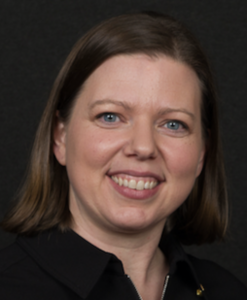
Amy Grice
Principal Engineer – System Planning & Protection
Title:
Discussion on Importance of Maps
Bio:
Amy Grice, Chief Operating Officer, has been with Peninsula Light since 2011 focusing on new operational technologies to improve distribution system efficiencies, data visualization and outage response. Amy embarked on her utility career in the early 2000’s as an electrical engineer for Tacoma Power in the SCADA/Control Center. She has a Master of Engineering and Technology Management and a Bachelors of Science degree in Electrical Engineering, both from Washington State University. She is a registered PE in Washington State and has completed the NRECA Management Internship Program (MIP).

Dr. Ahlmahz Negash
Principal Resource Planning Analyst, Tacoma Power
Title:
Energy Justice Considerations in Energy Policy and Utility Cost Recovery
Abstract:
In order to achieve a just clean energy transition, the electric utility industry must systematically incorporate tenets of energy justice into its policies, practices and procedures – including rate design. At a minimum, that means to fairly allocate the costs and benefits of the energy system across all members of society. One way this can be accomplished is by distinguishing between costs that should be borne by society as a whole and costs that should be borne individually by customers. Such a distinction is not possible when utilities rely heavily on volumetric rates for cost recovery as they do today. In this talk, we present a public goods framework for electric rates as a solution and discuss the energy justice and policy implications of a utility cost recovery method that recognizes the provision of grid access and decarbonization as a public goods, paid for via taxation rather than rates. We show that while this framework can significantly reduce energy burden among over-burdened customers and potentially incentivize electrification, questions remain regarding the effectiveness and the potential unintended consequences of such a transformational paradigm shift in utility cost recovery.
Bio:
Dr. Ahlmahz Negash is a Principal Resource Planning Analyst at Tacoma Power. Her role encompasses a wide range of activities including, leading regional planning efforts, resource modeling, evaluating policy impacts, and developing innovative demand-side projects. She recently completed a year-long sabbatical from Tacoma Power to lead collaborative energy justice research both locally and internationally. Prior to joining Tacoma Power, Dr. Negash was a research fellow at the Norwegian University of Science and Technology in Trondheim, Norway. She received her BS and PhD degrees in Electrical Engineering from the University of Washington in 2010 and 2015, respectively.

Darin Johnson
BIS Consulting
Title:
Evaluating the Cost-Effectiveness of Resiliency
Abstract:
What is the benefit of improved resiliency? How do customers value resiliency improvements – which they must ultimately pay for – relative to the cost, including the opportunity cost of other work that could have been done? Projects targeted at resiliency improvement bring extra layers of complexity, testing the limits utilities’ decision-making tools. This presentation discusses an approach, successfully applied by several utilities, that pulls all the relevant risk streams and life-cycle costs together in one place to support evaluation of complex projects with benefits across multiple domains.
I will also provide a brief introduction to wildfire and best-practices consortia, which have proven to be valuable for sharing information and as risk-management tools in themselves.
Bio:
Darin Johnson is the President at BIS Consulting, where he specializes in decision-support methods and complex, multi-disciplinary business cases for electric T&D, generation, and water/wastewater utilities. He is the lead convenor for the Risk Management working group of the International Wildfire Risk Mitigation Consortium and for the Utility Evolution working group of the Electric Asset Best Practices Consortium.
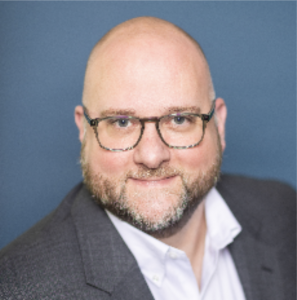
Ryan Roy
Director of Operations and Technology, Western Power Pool (WPP)
Title:
Western Resource Adequacy Program (WRAP)
Abstract:
This talk focuses on Western Resource Adequacy Program (WRAP). The presentation will cover an overview of the program structure and policy, the current state of development, and what you can expect to see in the coming months and years.
Bio:
Ryan oversees the day-to-day functioning of and provides subject matter expertise to WPP’s Operations, Planning and Grid Integration programs as well as the staff that manage and support those programs. Prior to joining WPP in 2021, Ryan spent 18 years working in public power most recently as the Manager of Short-Term Trading and Operations at Chelan County Public Utility District. Ryan earned a Master of Science degree in Software Engineering from DePaul University and a bachelor’s degree in Business Administration.
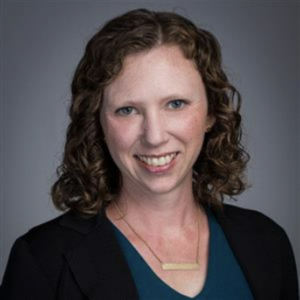
Siobhan Doherty
Director of Power Management at Seattle City Light
Title:
It is in our Power, Waiting for the Green Light
Abstract:
We stand at the crossroads of environmental stewardship and technological innovation and utilities are facing a momentous challenge: how to transform the energy grid with sustainability at the center. The urgency of climate change demands bold action and Washington state has set ambitious goals to lead the way. The Clean Energy Transformation Act (CETA) commits Washington to an energy supply free of greenhouse gas emissions by 2045. Seattle City Light exemplifies this commitment and is investing in electrification to tackle emissions beyond the grid. Utilities must embrace the challenge, collaborate across sectors, and forge a path toward a sustainable energy future.
Bio:
Siobhan Doherty joined Seattle City Light as the Director of the Power Management Division in September 2022. The Power Management Division is responsible for power marketing, participation in the CAISO Western Energy Imbalance Market, resource planning and acquisition, and managing the utility’s portfolio of wholesale power contracts.
Siobhan is a very experienced energy professional and leader with over 15 years’ experience in the industry. Prior to Seattle City Light she spent 5+ years leading power procurement and planning as Director of Power Resources at Peninsula Clean Energy, a community choice energy agency in California. In her time at Peninsula, Siobhan helped build a team responsible for responsible for a 3,600 GWh / $200MM+ annual energy supply portfolio, including strategy, analysis, procurement, resource planning, and regulatory compliance. She provided vision and leadership for Integrated Resource Planning and negotiated Purchase Power Agreements (PPAs) over 700MW of renewable energy projects. She was responsible for representing the organization in joint procurement efforts with other community choice energy agencies, including in the first ever solicitation for long duration energy storage.
Before joining Peninsula Clean Energy, Siobhan had a served as Finance Director at EverCar, an electric mobility platform provider. Prior to that, she spent 5 years at SunEdison, a developer, operator and owner of solar power plants, in multiple leadership roles related to project finance, development, contracting, and innovation.
Siobhan is a graduate of Smith College in Northampton MA, with a BA in Government and Environmental Science. She also holds an MBA and an MS from the University of Michigan in Ann Arbor.

Diane Baldwin
Pacific Northwest, National Laboratory
Title:
Advanced Energy Storage Technologies
Abstract:
Advanced energy storage technologies that deliver better performance and duration at lower costs are key to creating a cleaner, more reliable, and resilient electric power grid. PNNL is distinguished in energy storage research and development by its capability to
- validate
- accelerate
- collaborate and
- educate.
Diane will highlight energy storage technology developments – the latest in materials science – as well as PNNL programs to support deployment and industry acceptance of energy storage systems. She will share exciting new capabilities coming to PNNL in 2024 in the U.S. Department of Energy, Office of Electricity’s new $75 million facility, the Grid Storage Launchpad, a national grid energy storage research and development facility.
Bio:
Diane has worked in the renewable energy field as a power system engineer, energy policy analyst, and program administrator. Her focus is on grid interconnection and integration of renewable energy and energy storage, and she has experience in wind, solar, small hydro, biomass, and marine energy technologies. Diane has engaged with numerous utility companies in the Northwest and with Bonneville Power Administration to deliver substation designs, protection and control schemes, and long range plans. As a project manager, she has led innovative demonstrations in demand side technologies, renewables integration, and energy storage. Previous work experience includes the Oregon Department of Energy and part of the team delivering PacWave, the nation’s first grid connected wave energy device test facility, for Oregon State University. Diane has a BSEE from Colorado State University and is a registered Professional Engineer (inactive) in the state of Oregon.

To be designated by Allyson Kenney SEL
Title:
The Fundamentals and Future of Protection and Controls
Abstract:
This talk (or series of two talks) will present the basics of Protection and Controls on distribution and transmission grids of the future. On the Transmission system, decreased synchronous generation and increased interconnections of inverter-based generation, as well as mass electrification of loads is changing the fault current levels, and transient response of the grid. How will protection and control adapt?
On the distribution system, bidirectional flows, mass electrification and increased power-electronic loads, microgrids and islanding, as well as networked distribution systems will all likely affect the efficacy of today’s protection systems – again, how will protection and control adapt? What are the recommended methods to handle all these changes and ensure reliability? How do all power systems engineers (protection, substation design, planning, operations, etc.) need to prepare?
Bio:
To be provided
